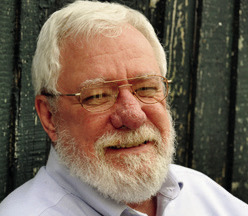Charles Gayarre was an attorney by trade, a politician by choice, and a historian partly because he found the story of Louisiana replete with poetry. To my mind, that is especially true of south Louisiana.
He is credited with writing the first complete history of Louisiana. He said he was drawn to the subject because there is so much romance to be found here and discussed that romance at some length in a series of lectures that were published in 1848 as “Romance of the History of Louisiana” (New York: D. Appleton & Co.)
“I am prepared to show that her history is full of poetry of the highest order, and of the most varied nature,” he said. “I have studied the subject con amore [with love], and with much reverential enthusiasm, and I may say with such filial piety that it has grown upon my heart as well as upon my mind.”
History is most often about the narration of events, he said, but it is also useful “to point out the hidden sources of romance which spring from them – to show what materials they contain for the dramatist, the novelist, the poet, the painter, and for all the varied conceptions of the fine arts.”

Bradshaw
When I read those sentiments, my second thought was about Longfellow and his tale of the Acadian dispersion, a story fit for poetry, painting, drama, dance, and myriad other forms of artistic expression. My first thought, I’m not sure why – perhaps triggered by the world “romance” – was of the late André Olivier, the St. Martinville raconteur who devoted much of his life to promoting Longfellow’s story and the Teche country. Olivier found “a concentration of romance and beauty not excelled . . . anywhere in the nation” in and around his hometown.
The beauty of Louisiana is apparent, but writers and artists have also been inspired from early times by our heroes and scoundrels and their follies and adventures. Louisiana’s first poet, Julian Poydras, wrote in French about Spanish Gov. Bernardo Galvez’s military campaign in support of the American Revolution. In fact, most, if not all, of Louisiana’s best work was in French during colonial times.
But after the Louisiana Purchase in 1803, celebration of the culture and language of French Louisiana “seemed doomed to disappearance by the engulfing tide of Americanization,” in the words of Mathé Allain, the UL prof who edited a thick volume of essays on “Louisiana Literature and Literary Figures” (Lafayette: Center for Louisiana Studies, 2004).
That celebration might have been lost forever, but south Louisiana’s French renaissance that began in the late 1960s, brought with it a revival of poetry, prose, and music rooted “in the history, customs, and lore of the Cajuns and Black Creoles,” Allain notes. She said the oral tradition of South Louisiana kept alive much of what our modern renaissance builds upon. Our storytellers kept alive tales and dramatic stories of life that were passed from generation to generation and that, although unwritten, were honed to something that could easily be called art.
I can’t say that I am a part of that tradition, although the first piece of writing I ever sold was a poem. It wasn’t to a literary journal; Dog World magazine sent me my first check. I was ten years old when I wrote – excuse the pun – this piece of doggerel: My dog is a silly thing / It loves to sleep all day. / But when it’s time to go to bed, / He wants to romp and play. Dog World used it as a column filler and sent me $5, which was big money in those days – it would buy 100 comic books or, better yet, 50 comics and 50 Tootsie Rolls.
Simple geography is the cause for my failure to become a great poet. Wind-rippled grasses on the prairies, the moss-draped oaks of the Teche, the tangled beauty of the Atchafalaya Basin have all inspired poets and painters for generations. But I lived elsewhere.
I might have turned into another Longfellow if I had grown up in one of those places, but the biggest tree in our yard was a moss-less chinaball, and the river that I knew as a youth, as pretty as parts of it could be, presented too much of a challenge. My lyrical skills were just not up to finding a romantic allusion to birds getting drunk on fermenting chinaberries or to discover a truly good rhyme for “Calcasieu.”
You can contact Jim Bradshaw at [email protected] or P.O. Box 1121, Washington LA 70589.

